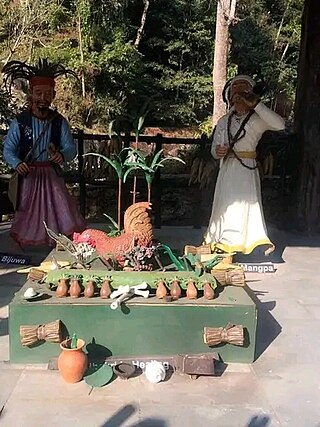Kirat Mundhum
traditional folk religion of the Kirati people From Wikipedia, the free encyclopedia
Remove ads
Kirat Mundhum, (Nepali: किरात मुन्धुम) also known as Kiratism, or Kirati Mundhum, is a traditional belief of the Kirati ethnic groups of Nepal, Darjeeling and Sikkim, majorly practiced by Yakkha, Limbu, Sunuwar, Rai,Dhimal and Hayu peoples in the north-eastern Indian subcontinent.[2] The practice is also known as Kirat Veda, Kirat-Ko Veda or Kirat Ko Ved. According to some scholars, such as Tom Woodhatch, it is a blend of shamanism, animism (e.g., ancestor worship of Yuma Sammang/Tagera Ningwaphumang and Paruhang/Sumnima), and Shaivism. It is practiced by about 3.17% of the Nepali population as of 2021.[3]

The Kirat people of Nepal and India have ancient religious scriptures and folk literature that are central to their cultural identity. These texts are known by different names among the various Kirat communities. The Limbu people call it "Mundhum," while the Mewahang refer to it as "Muddum," the Yakkha as "Mintum," the Sunuwar as "Mukdum," and among other Rai groups, it is called "Ridum," "Mundum," or "Mundhum" depending on the dialect.[4][5][6]
These religious texts are considered to hold great spiritual power and describe the beliefs, customs, and traditions of the Kirat people that existed even before the Vedic period in ancient India. They are an important part of the Kirat heritage and reflect their unique worldview and ancestral practices.[7]
Remove ads
References
Wikiwand - on
Seamless Wikipedia browsing. On steroids.
Remove ads

